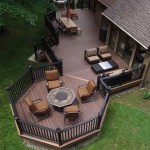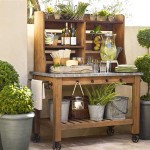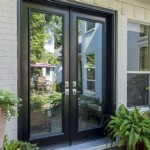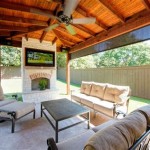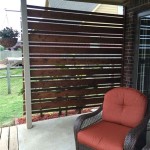Bringing Shade And Comfort To Your Patios
Patios serve as extensions of the indoor living space, offering areas for relaxation, dining, and entertainment. However, the full potential of a patio is often limited by exposure to direct sunlight and inclement weather. Implementing effective shade solutions transforms a patio into a usable and comfortable outdoor oasis, regardless of the time of day or environmental conditions. This article explores various methods for providing shade and enhancing the overall comfort of patio spaces.
Assessing Patio Shading Needs
Before implementing any shading solution, a thorough assessment of the specific patio is crucial. This involves considering several factors, including the patio's orientation, the amount of direct sunlight it receives throughout the day, and the prevailing weather patterns in the region. The orientation of the patio relative to the sun's path dictates the duration and intensity of sunlight exposure. East-facing patios receive morning sun, west-facing patios receive afternoon sun, and south-facing patios receive the most sun exposure throughout the day, particularly during summer months. Identifying these patterns helps determine the type of shading that will be most effective. Furthermore, the location's climate influences the choice of materials and the design of shading structures. Areas with frequent high winds require more robust and durable solutions, while areas with high rainfall require waterproof or water-resistant options.
Beyond sunlight and weather, consider the existing architecture and landscaping surrounding the patio. The style of the house and the surrounding yard influence the aesthetic compatibility of potential shade structures. A modern home might benefit from sleek, minimalist shade sails, while a more traditional home might be better complemented by a pergola covered in climbing vines. The presence of existing trees can also influence the placement and type of shading structure. Leveraging existing shade from mature trees can reduce the need for extensive constructed shading. Consider the size of the patio as well. Larger patios may require multiple shade solutions or larger structures to effectively cover the entire area.
Finally, consider the intended use of the patio. A patio primarily used for dining might require more complete shade coverage to protect from intense sunlight and reduce glare. A patio used for lounging might benefit from a combination of sun and shade, allowing occupants to choose their preferred exposure. The level of privacy desired is also a factor. Some shade solutions, such as screens or dense planting, can provide both shade and privacy.
Types of Patio Shade Solutions
A wide range of shade solutions are available, each with its own advantages and disadvantages. These solutions can be broadly categorized into permanent structures, semi-permanent structures, and temporary solutions. The best choice depends on the individual needs, budget, and aesthetic preferences of the homeowner.
Permanent shade structures offer the most robust and long-lasting shade. These structures typically require professional installation and significant investment but provide reliable protection from the elements for many years. Examples of permanent shade structures include:
*Pergolas:
These structures consist of posts supporting a lattice or open framework of beams. Pergolas can be constructed from wood, metal, or composite materials and can be customized to fit any patio size or style. While pergolas provide partial shade, they can be enhanced by adding climbing plants, shade cloth, or retractable canopies. *Awnings:
Awnings are permanently mounted coverings that extend from the side of a building. They can be made from a variety of materials, including canvas, acrylic, or metal, and can be either fixed or retractable. Retractable awnings offer flexibility, allowing homeowners to adjust the amount of shade depending on the weather. *Patio Covers:
These solid-roof structures provide complete protection from sun and rain. Patio covers can be constructed from aluminum, wood, or vinyl and are often integrated into the existing house structure. They can also be enclosed with screens or windows to create a fully enclosed outdoor room.Semi-permanent shade structures offer a balance between durability and flexibility. These structures are typically easier to install than permanent structures but provide more substantial shade than temporary solutions. Examples of semi-permanent shade structures include:
*Shade Sails:
Shade sails are fabric canopies suspended between multiple anchor points. They are typically made from durable, weather-resistant materials such as high-density polyethylene (HDPE) and come in a variety of shapes, sizes, and colors. Shade sails offer a modern and visually appealing shading solution. *Gazebos:
Gazebos are freestanding, roofed structures that provide complete shade. They can be constructed from wood, metal, or vinyl and are often octagonal or circular in shape. Gazebos provide a focal point for the patio and create a comfortable, sheltered space. *Umbrellas:
Large patio umbrellas offer a flexible shading solution that can be easily moved as needed. They are available in a variety of sizes, styles, and materials, including cantilever umbrellas that provide shade without a central pole.Temporary shade solutions offer the most flexibility and affordability. These solutions are easy to set up and take down, making them ideal for occasional use or for homeowners who prefer to change their patio layout frequently. Examples of temporary shade solutions include:
*Pop-up Canopies:
These portable canopies provide instant shade and are ideal for parties or events. They are lightweight and easy to transport and set up but may not be suitable for use in windy conditions. *Screens and Curtains:
Outdoor screens and curtains can provide both shade and privacy. They can be made from a variety of materials, including fabric, bamboo, or woven reeds, and can be hung from existing structures or freestanding frames.Material Considerations for Patio Shade Solutions
The choice of materials for a patio shade solution is crucial for its durability, aesthetic appeal, and overall performance. Different materials offer varying degrees of weather resistance, maintenance requirements, and aesthetic characteristics. Understanding the properties of different materials is essential for making an informed decision.
For permanent and semi-permanent structures, wood is a popular choice due to its natural beauty and versatility. However, wood requires regular maintenance to prevent rot, decay, and insect infestation. Pressure-treated wood is more resistant to these problems but still requires sealing or staining to protect it from the elements. Metal, such as aluminum or steel, offers superior durability and requires less maintenance than wood. Aluminum is lightweight and rust-resistant, while steel is stronger and more durable but can be susceptible to rust if not properly coated. Composite materials, such as wood-plastic composites (WPC), offer a combination of the aesthetic appeal of wood and the low maintenance of plastic. WPC is resistant to rot, decay, and insect infestation and does not require painting or staining.
For fabric shade solutions, such as shade sails and awnings, the choice of fabric is critical for its performance and longevity. Acrylic fabrics are known for their excellent colorfastness, water resistance, and durability. They are resistant to fading, mildew, and rot. Canvas fabrics are another popular choice for awnings and umbrellas. They are durable and water-resistant but may require regular treatment to maintain their water repellency. High-density polyethylene (HDPE) fabrics are commonly used for shade sails due to their strength, UV resistance, and breathability. HDPE fabrics allow air to circulate, reducing the build-up of heat and moisture.
In addition to the structural materials and fabrics, consider the hardware and fasteners used in the shade solution. Use stainless steel or other corrosion-resistant hardware to prevent rust and ensure the longevity of the structure. Proper installation is also crucial for the safety and performance of the shade solution. Follow the manufacturer's instructions carefully or hire a professional installer to ensure that the structure is properly secured and can withstand wind and weather conditions.

26 Patio Shade Ideas To Help You Stay Cool Timbertech

Finely Made Outdoor Shades For Secluded Comfort Sunshine Drapery St Louis Custom Draperies Window Treatments

Patio Cover Ideas The Home Depot

Patio Cover Ideas The Home Depot

6 Creative Ways To Bring Shade Into Your Backyard

13 Ways To Make Your Patio As Comfy Living Room

Patio Cover Ideas The Home Depot

15 Creative Pergola Ideas For Patio Perfection Struxure

10 Shade Ideas For Backyards Patios Extra Space Storage

How To Cover A Pergola Best Ideas For Shade Protection
Related Posts

